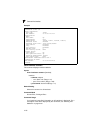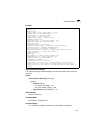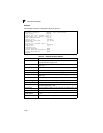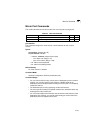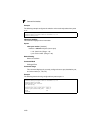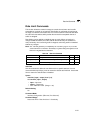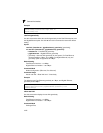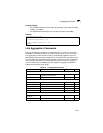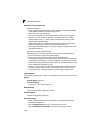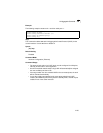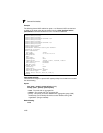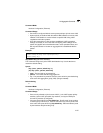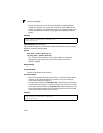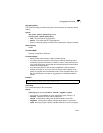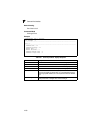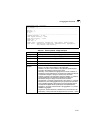
Command Line Interface
4-124
4
Guidelines for Creating Trunks
General Guidelines –
• Finish configuring port trunks before you connect the corresponding network
cables between switches to avoid creating a loop.
• A trunk can have up to eight ports.
• The ports at both ends of a connection must be configured as trunk ports.
• All ports in a trunk must be configured in an identical manner, including
communication mode (i.e., speed, duplex mode and flow control), VLAN
assignments, and CoS settings.
• All the ports in a trunk have to be treated as a whole when moved from/to,
added or deleted from a VLAN via the specified port-channel.
• STP, VLAN, and IGMP settings can only be made for the entire trunk via the
specified port-channel.
Dynamically Creating a Port Channel –
Ports assigned to a common port channel must meet the following criteria:
• Ports must have the same LACP system priority.
• Ports must have the same port admin key (Ethernet Interface).
• If the port channel admin key (lacp admin key - Port Channel) is not set when
a channel group is formed (i.e., it has the null value of 0), this key is set to the
same value as the port admin key (lacp admin key - Ethernet Interface) used
by the interfaces that joined the group.
• However, if the port channel admin key is set, then the port admin key must
be set to the same value for a port to be allowed to join a channel group.
• If a link goes down, LACP port priority is used to select the backup link.
channel-group
This command adds a port to a trunk. Use the no form to remove a port from a trunk.
Syntax
channel-group channel-id
no channel-group
channel-id - Trunk index (Range: 1-4)
Default Setting
The current port will be added to this trunk.
Command Mode
Interface Configuration (Ethernet)
Command Usage
• When configuring static trunks, the switches must comply with the Cisco
EtherChannel standard.
•Use no channel-group to remove a port group from a trunk.
•Use no interfaces port-channel to remove a trunk from the switch.



